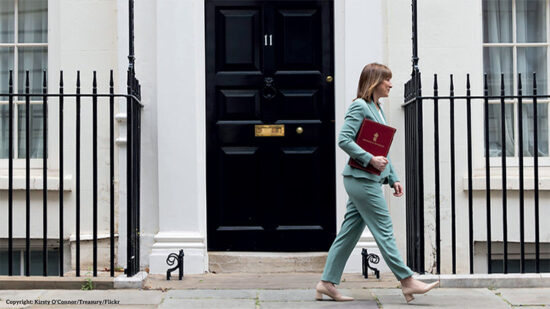Sterling
Despite some doom and gloom forecasts from the Bank of England and some awful trade numbers Sterling managed to hold its own through last week and even make modest gains against the Euro. Investors continue to see benefits in holding Sterling, and bad news is being brushed aside, outweighed by its safe haven status. With the lack of any new initiatives from the European Central Bank, Sterling should hold up well against the Euro while the 1.5450-1.5750 trading range will likely persist through this week’s quiet holiday period.
Comments like these will look to underpin Sterling in the short term and we see a gradual appreciation against the Euro in the week ahead, with the 1.5450-1.5750 range against the US dollar persisting for the time being.
US Dollar
The dollar finished last week little changed against its major competitors, getting a slight boost towards the end as signs of slowing growth in China saw a small flight to quality. A four month low against the Australian dollar was halted as the US saw modest gains towards the weekend. Generally the dollar markets were quiet with volatilities easing across the board. Investors are becoming sanguine about events in Europe and are starting to slowly reinvest in stocks as US bond markets lose some of their safe haven status with yields on 10 year treasuries seeing the highest levels since May.
This week sees some important data releases including Retail Sales, Business Inventories, Industrial Production as well as various indices, and these will all be watched carefully. However, on balance the figures suggest that the economy is bumping along gradually, but is at least growing, something that may not be the case in Europe. The dollar will remain in demand in the short term but barring any new shocks out of Europe, the appreciation will be slower. We still see lower levels against the Euro, 1.20 is possible, but see the broad range of 1.5450 to 1.5750 persisting against Sterling.
Euro
After staring into the abyss last week the Euro managed to regain some poise going into the close last Friday, and finished the week only slightly down on those levels. Rumours that the European Central Bank (ECB) would finally announce some new measures to prop up the ailing Euro saw a late rally, but as every day passed with no news, the gains were slowly eroded. Poor data out of the Euro zone didn’t help and from closing levels last Friday near 1.2400 and 1.2630 against the US dollar and Sterling respectively the Euro finishes this week near 1.2270 and 1.2700.
Six-month implied volatility on the Euro has now reached a 4 year low against the US dollar and has fallen against all the major currencies. The Euro crisis has been rolling on for a long while now and the markets are used to disappointing news. That having been said, there are no good reasons to buy Euros just yet, but the chance of a sudden collapse seems small, as seen by the fall in volatilities. With a lack of any new incentives from the ECB, we continue to see a gradual erosion in the Euros value, and feel that 1.20 and 1.29 versus US dollar and Sterling respectively will be seen at some stage.
New Zealand Dollar
The Kiwi gave ground last week after some unexpectedly poor unemployment numbers gave investors a reason to take profit in a currency that had appreciated from 2.10 to below 1.91 against Sterling in the space of just over 2 months. While the employment figures were a surprise, the fundamentals for the kiwi remain fairly resilient, and a resumption of the downtrend should continue in the medium term.
It is clear that the markets have been too optimistic on growth prospects in the near term. While the NZ economy shows some signs of moving forward, it will remain dependent on recoveries in its main trading partners, particularly China. One set of figures should not stop the gradual NZ appreciation we have seen May, but they will probably slow its progress. We would look for some further retracement next week, perhaps to 1.9350, before the move down continues.
Australian Dollar
The Aussie continued to appreciate last week to make new lows of 1.4705 against Sterling before profit-taking set in after poor Chinese trade numbers. The markets were looking for an excuse to take profits on their long Aussie positions, and the reasoning was that if Chinese trade is slowing, then it will impact on the region as a whole. However the fall in the currency was small and a resumption of the uptrend is likely in the short term.
The RBA will probably try to damp down expectations of further interest rate easing as improvements in the housing sector together with an ongoing rise in private sector consumption have been seen. He will however keep the door open should events take a turn for the worse. Given this, we see the Aussie continuing its gradual appreciation, and a retest of 1.4705 is likely, with the all time low of 1.4550 the eventual target.
Canadian Dollar
The Canadian Dollar powered ahead in what was a shortened week due to the Civic Day holiday, helped by very strong data and some negative words from Bank of Canada governor Carney about the financial stability of the Europe. The loonie (the market name for the Canadian dollar) appreciated below parity against the US Dollar for the first time since May and breached the 1.55 level against Sterling for the first time since March. With the Canadian economy looking in good shape compared to some of its other G10 compatriots, we can see further gains in the week ahead.
The Canadian dollar should continue to be in demand in the week ahead. The markets should be quiet through the August holiday period, but investors will still want to find a safe haven for their funds. With an economy that is still growing, the CAD represents good value at the moment, and while big moves are not expected, another test of 1.5460 may be seen next week. After that 1.5410, the low of September 2011 and then 1.5245, the July 2011 low could be targets.
For more currency data and information on how to assist your clients with their international money transfers, please visit the International Adviser Currency Zone powered by Moneycorp.








